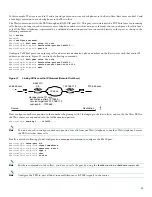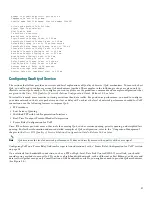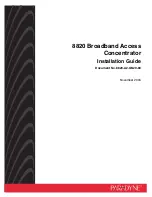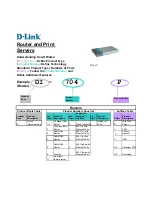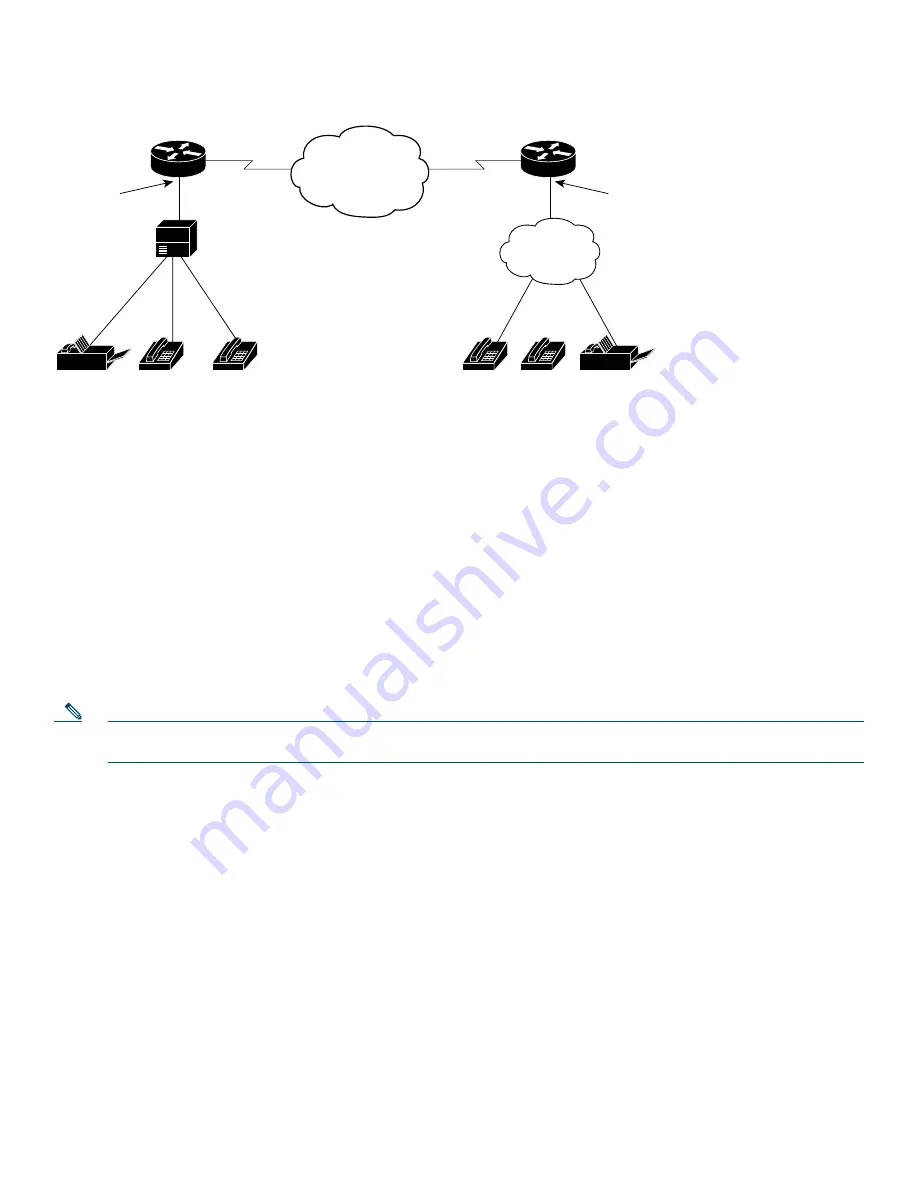
27
Figure 22
A Network Using ISDN BRI Voice Interfaces
Configuring the BRI Layer 1
At the BRI Layer 1, you can configure each port of the VIC to operate in NT (clock source) or TE (clock slave) mode by using
the IOS
isdn layer1-emulate
command in interface configuration mode:
isdn layer1-emulate {network | user}
where
network
enables the VIC to operate in the NT mode, and
user
enables it to operate in the TE mode. The default setting
for each port is the TE mode.
Configuring the ISDN Protocol
Depending on your ISDN switch type, the Layer 2 protocol may be configured to operate in NT or TE mode. To do this, use
the
isdn protocol-emulate
command in interface configuration mode:
isdn protocol-emulate {network | user}
where
network
enables the ISDN Layer 2 to operate in the NT mode, and
user
enables it to operate in the TE mode. The default
setting is the TE mode.
Note
The configurations of Layer 1 and Layer 2 are independent of each other. For example, you can set the Layer 1 operating
mode to NT and set the Layer 2 to TE.
Turning the Line Power On/Off
To control the line power (phantom power only) being supplied to a connected device, use the
line_power
command in interface
configuration mode:
line_power
no line_power
The
line_power
and
no line_power
commands are valid only for a BRI port operating in NT mode. If a port is equipped with
hardware to supply line power, using these commands will activate or deactivate line power provision from that port.
Setting the Network Clock Priority
If a port is operating in TE mode, you can set the clock priority for that port. The clock priority determines whether the external
clock on the ISDN line or the internal clock on the system board takes control. To change the clock priority, use the
network-clock-priority
command in interface configuration mode:
network-clock-priority {high | low}
60960
Router A: Cisco 1760
Router B: Cisco 1760
PBX
BRI NT
interface
BRI TE
interface
WAN/IP
Network
PSTN
Summary of Contents for 1760 - VPN Bundle Router
Page 39: ...39 ...













